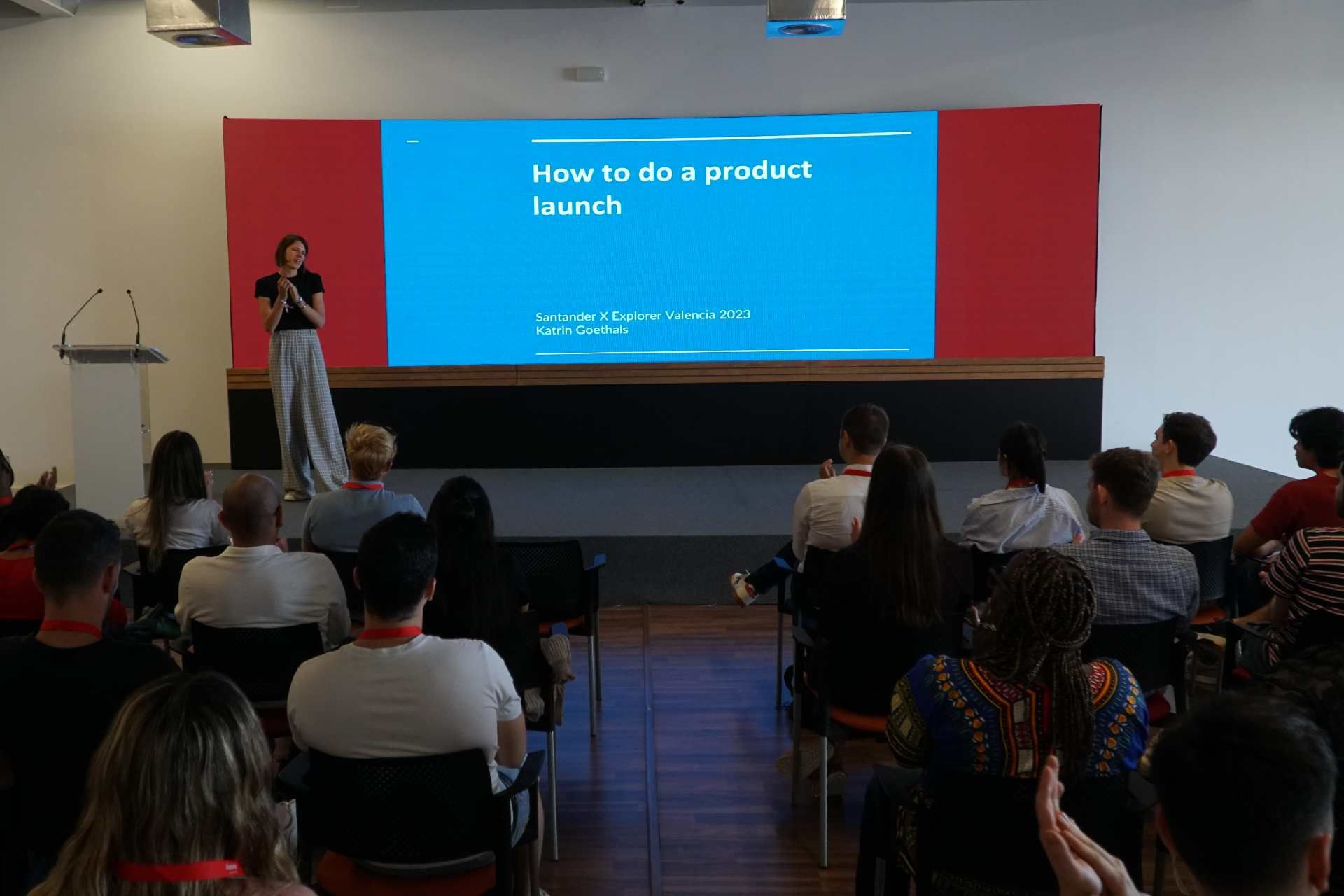9/6/2022
Create your startup
8 minutes of reading
What is an MVP? NOT the first step of your startup
Authors
- Santander X Explorer
Categories

What is an MVP? How do I create one? What problems may I encounter… and how do I solve them? Let’s take a look with a few simple steps.
If you’ve ever been in business before, you may, unfortunately, have encountered one of these problems:
- You built something that later, to your surprise and dismay, you saw was not a necessity at the time.
- You ran out of money or you had cost-related problems when setting your price .
- Your founding team was not the right one.
- You didn’t have a good business model.
- You did not take your customers into account .
- There was another competing solution that outperformed you.
- Etc.
Good news: you’re not the only one this has happened to.
Successful products work because of something that seems simple but isn’t really: they pinpoint an idea that people are willing to pay for.
People don’t buy products, they buy solutions
Broadly speaking, the success of a product or service can be predicted if it allows the user to do more things or have fewer difficulties.
More specifically, the customer is looking to:
- Save time when performing a task.
- Save money (e.g., by buying a pack of different products or services that cost the same as one product or service - and which work well together).
- Better solve a problem (compared to the solution offered by other existing and expensive products).
- Optimise operations and free up resources (efficiency); for example, with a CRM, a process management system…
- To have information or strategic partnerships at their disposal.
- Educate themselves or boost their skills to obtain business opportunities.
- Convert complex information extracted from different sites into simple, effective and relevant data to use in making strategic decisions .
Here’s an example taken from our Explorer alumni: the case of Sofia Belenguer of MyRealFood app . “We set about the process of validating with people, seeing what their problem was when it came to eating healthy. Not only was there a lack of information, but they also had a lack of motivation, a lack of time, they didn’t know how to cook those foods… That’s why we decided to incorporate the community part that is there now and the part about recipes and food,” she explains.
The Minimum Viable Product or MVP
The Minimum Viable Product (MVP) is the test version of a new product that allows you to collect the maximum possible information (customer validations) with the minimum possible effort. It is used for both products and services and is directly related to the lean startup method .
Your MVP should take into account not only functionality and reliability, but also be intuitive for the user (usable) and have a design that can get them excited and appeal to people visually:
If the idea works, the resources and structures necessary for its development can be put in place. Easy, isn’t it? Not too easy since you have to go through several stages.
Fail fast, fail cheap
The fact that it is an iterative process involving repetition does not mean that we should just get right to it, no matter how much we like to get down to work. No. Before you create your MVP, you should know if your customers are going to want it. And to know that, you have to do some prior research.
These are the three steps to take before creating and launching your Minimum Viable Product (or service):
- Understand the real problem you need to solve for your customers and inform yourself with information about the market. Trade shows and industry events are key because they will give you an idea of what people complain about or what they struggle with in their day-to-day lives.
- Define the solution: find out what tasks need to be done to solve the problem through interviews that reveal what customers really need (not what they say they want).
- Create an irresistible offer where potential customers can see the value that your product or service will bring them (as Steve Jobs said, ‘the customer doesn’t have to know what they want’).
With the data you start collecting from that moment on, you will be able to know if it is worth the effort to create a Minimum Viable Product…. or not. Consider this:
If the amazing product you’re offering doesn’t attract customers, do you think anyone will be interested in your MVP later on?
That’s why many experts recommend boostrapping when launching a startup: the technique can allow you to be sustainable (financially speaking) with your own resources and through your own customers (vs. early external funding). Here, the best tips are:
- Do not leave your job until it is strictly necessary.
- Don’t buy, rent.
- Do not scale up until you have a pressing need to do so.
- Focus on covering your hardware and hosting costs first and wait to hire.
Ultimately, the best way to validate a startup when you begin is to test your pricing and confirm that customers are actually willing to pay for your solution.
Without these two basics, directly related to lean startup and boostrapping, you shouldn’t start your MVP… and without your MVP you shouldn’t build something that no one may want.
Steps to create an MVP
Luckily, testing will point out whether it’s a good idea to build your MVP or not. And if the tests say go ahead… that’s how you should create a Minimum Viable Product.
- Define the Value Proposition. If you know what solutions your product or service offers and what it will bring to the public, testing will be efficient and realistic.
- Choose the right audience. It must have the same characteristics as the target audience you expect for your project.
- Determine the test time. If it is too short, the data you get may be insufficient. If it is too long, it could delay the launch of your product.
- Test the public’s response. Here you will see whether or not the market approves of your solution; this is the most important step in the process.
- Interpret user responsiveness. Collect their feedback and evaluate whether or not the product is ready to be launched. Filter out the interesting comments and distinguish from the uninteresting ones, but, as recommended by Steve Blank in this TalkX, don’t forget to listen to those people who don’t see the need for your proposal or who find it flawed because they will give you valuable information about the improvements you need to make… or about the change of direction you need to make.
- Modify the product or service. Apply the information to the design of the final product.
Now, are you all set? Ask, listen and create your MVP!
Source: https://rockcontent.com/es/blog/producto-minimo-viable/



